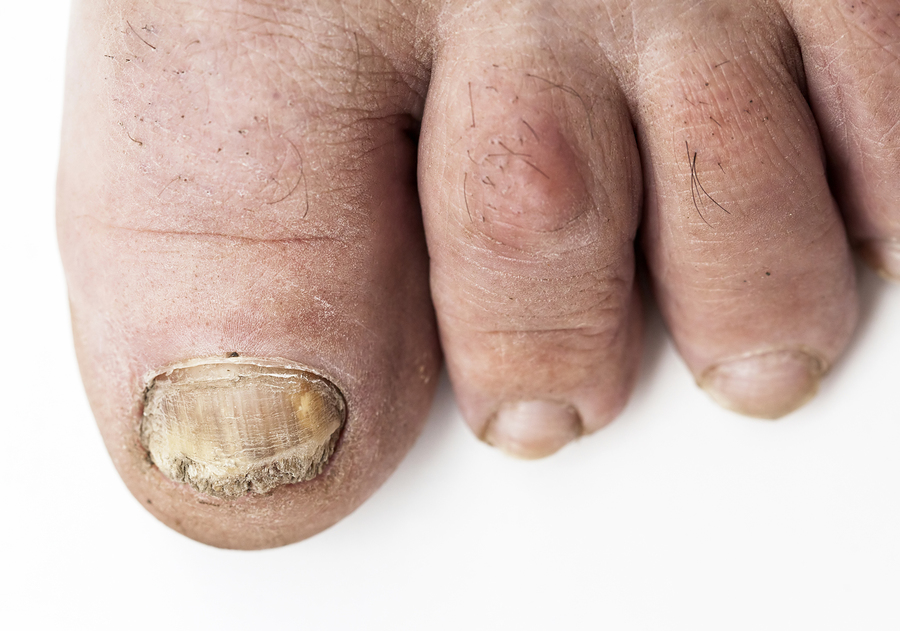Fungal infections can affect any part of the body. Fungi are normally present in and on the body alongside various bacteria. When a fungus begins to overgrow, you can get an infection.
Onychomycosis, also called tinea unguium, is a fungal infection that affects either the fingernails or toenails. Fungal infections normally develop over time, so any immediate difference in the way your nail looks or feels may be too subtle to notice at first.
Why Does It Develop?
A fungal nail infection occurs from the overgrowth of fungi in, under, or on the nail. Fungi thrive in warm, moist environments, so this type of environment can cause them to naturally overpopulate. The same fungi that cause athlete’s foot, and ringworm can cause nail infections.
Fungi that are already present in or on your body can cause nail infections. Fungal infections affect toenails more commonly than fingernails because your toes are usually confined to your shoes, where they’re in a warm, moist environment.
If you get a manicure or pedicure at a nail salon, be sure to ask how the staff disinfects their tools and how often they do it. Tools, such as emery boards and nail clippers, can spread fungal infections from person-to-person if they’re not sanitised
Who Is at Risk for Fungal Infections?
There are many different causes of fungal nail infections, and each cause has a treatment of its own. Although many of the causes of a fungal nail infection are preventable, some risk factors increase the likelihood of developing it. You’re more likely to develop a fungal nail infection if you:
Nail infections occur more often in men than in women, and the infections are found in adults more often than in children. If you have family members who often get these types of fungal infections, you’re more likely to get them as well. Older adults are at the highest risk for getting fungal infections of the nails because they have poorer circulation and their nails grow more slowly and thicken as they age.
What Does It Look Like?
A fungal infection of the nail may affect part of the nail, the entire nail, or several nails.
Visible Signs
Visible signs of a fungal nail infection include:
How Is a Fungal Nail Infection Treated?
Over-the-counter products aren’t usually recommended to treat nail infections because they don’t provide reliable results. Instead, your podiatrist/chiropodist may suggest Lamisil
Treatment isn’t guaranteed to rid your body of the fungal infection completely. In almost half of all cases, the fungal nail infection will return. Complications from fungal infection are also possible.
Tips to Prevent Fungal Nail Infections
Making a few simple lifestyle changes can help prevent a fungal infection of the nails. Taking good care of your nails by keeping them well trimmed and clean is a good way to prevent infections. You should also avoid injuring the skin around your nails. If you’re going to have damp or wet hands for an extended amount of time, you may want to wear rubber gloves.
Other ways to prevent fungal infections of the nails include:
Long-Term Outlook
For some people, a fungal infection of the nails can be difficult to cure and the first round of medication might not work. The nail infection can’t be considered cured until a new nail that’s free from infection has grown through. Although this indicates that the nail is no longer infected, it’s possible for the fungal infection to return. In severe cases, there may be permanent damage to your nail.
The main complications of a fungal nail infection are:
It’s especially important to see your doctor or podiatrist if you have diabetes and a fungal nail infection. People with diabetes are at greater risk of developing potentially serious complications caused by these infections.
